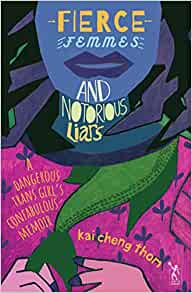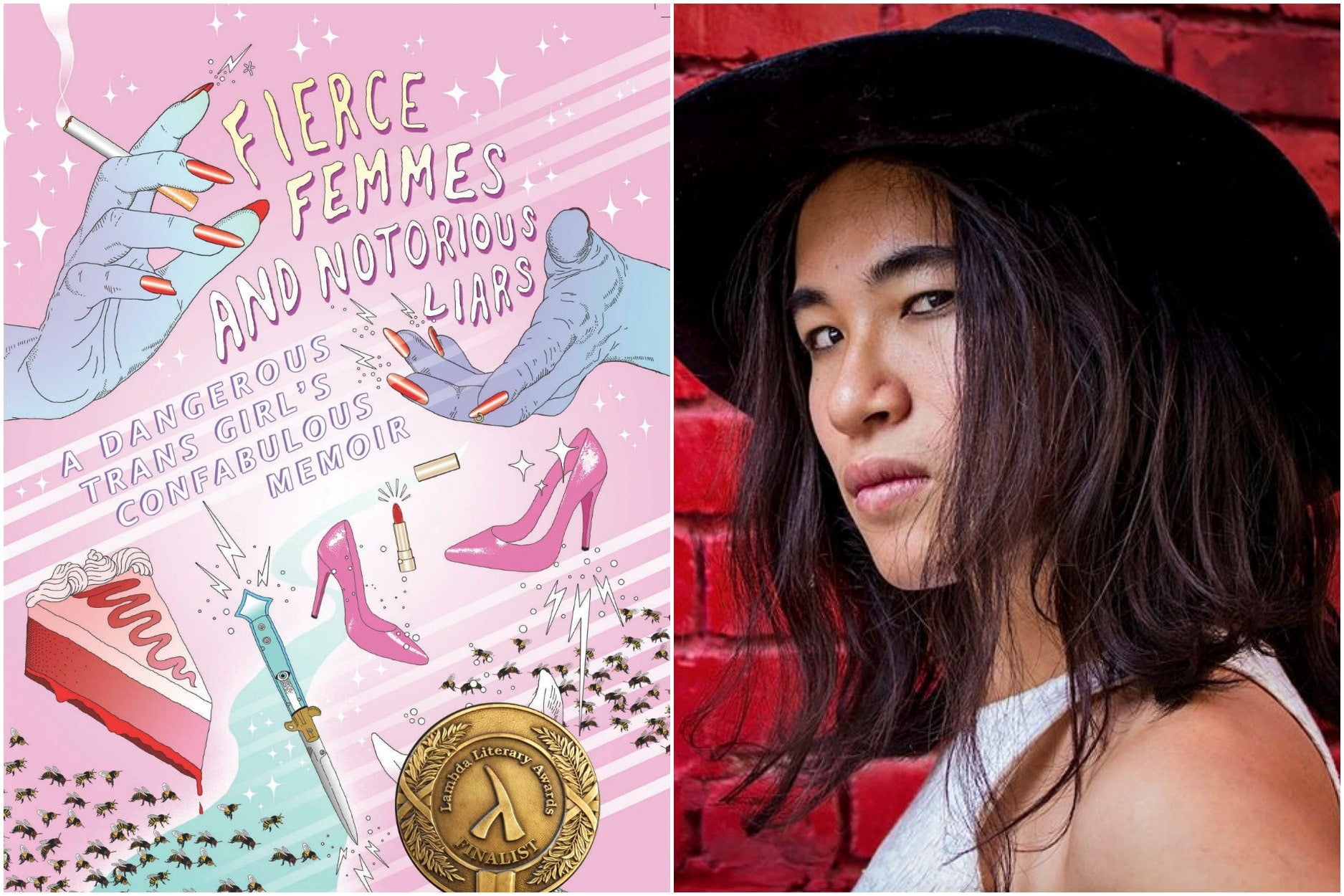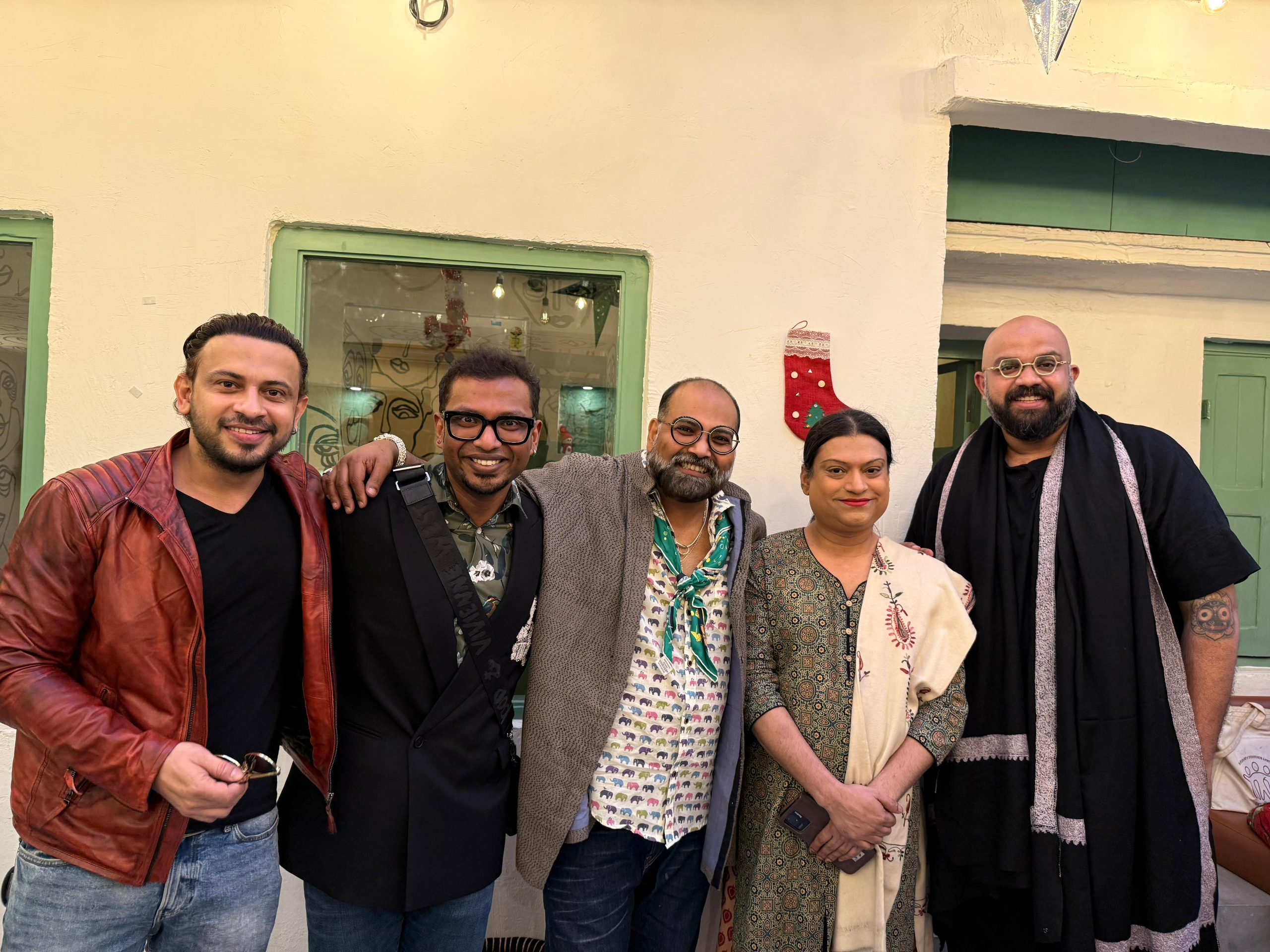Reading Fierce Femmes and Notorious Liars: A Trans Girl’s Confabulous Memoir by Kai Cheng Thom was both an experience of learning and unlearning. Narrated from a first person perspective, Fierce Femmes is a coming of age story about an Asian trans girl, who escapes from her house from a city called Gloom. What follows is a heart-warming tale of self-discovery, of what it means to identify as someone who is looked down by society.
Fierce Femmes and Notorious Liars: A Trans Girl’s Confabulous Memoir 2016
Author: Kai Cheng Thom
Publisher: Zubaan Books; August, 2019
Genre: Fiction

Without diluting how the world sees transgenders, Thom gives agency to all the non-binary gender groups she writes about, allowing them to both dream, and achieve those dreams. In making their trans identity only an aspect of their lives, Thom does something significant – she is able to narrate the story of full-fleshed out characters who are much beyond that one single part of their identity. With the relationships that the protagonist forges, Thom is able to show how important community is for developing a sense of belonging, and how you can find that community, it’s just a matter of where you look.
The book was a finalist for the Lambda Literary Award which celebrates and explores LGBTQ themes.
The Importance Of A Trans Girl As A Protagonist
“Where are all those stories about little swarthy-skinned robber trans girls waving knives made of bone? About trans teenage witches with golden eyes who cut out their own hearts and lock them in boxes so that awful guys on the internet will never break them again? About trans girl who lost their father in the war and their mother to disease, and who go forth to find where Death lives and make him give them back?”
“However, since the protagonist of the book is a trans girl, Thom turns the everyday narrative over its head – the Street of Miracles is not a place where desires are frowned upon. It is the place where the existence of these ‘fierce femmes’ makes the street known for being a sustained festival.”
Fierce Femmes and Notorious Liars begins with the success story of a white trans woman and the acceptance she receives after her sex-change surgery. The protagonist, however grateful she is that such stories exist, is quick to point out how the story of a white trans woman dominates and erases all other experiences of trans genders. The narrator is unable to identify with this one particular story, eager to push the boundaries of story-telling. Identifying as an Asian, she sheds light on her own experience growing up in an abusive Asian family, and how being Asian brings along other forms of discrimination. Even though it is never openly disclosed, it seems clear that the protagonist lives in a prominently white society through the various cues that the author drops in the book.
Thom thus is able to engage with intersectionality successfully, without declaring any one character’s experience as universal. By giving context of every character, the author highlights how these identities complicate the experience of being a trans woman, thereby bringing forth the stories of those who disappear at the intersection of gender and other social institutions like race, ethnicity etc.
Also read: Breaking Stereotypes And Myths Around The Transgender Communities
While Thom writes about the multiplicity of experiences of those who identify as transgender, she is able to develop her characters beyond simply being a trans woman. The protagonist enrols herself in French classes. Kimaya, the first friend the protagonist makes, fondly identifies herself a transparent. She runs a social welfare and health centre, allowing other trans women to find their freedom and independence. It is up to the women to decide whether they want breast implants or not, how they want to look and dress up, and what they wish to do in life.
By giving her characters jobs, desires and dreams, Thom is able to assert their humanness, and how important it is for them to live ordinary, everyday lives, something they are denied of in real life. At the same time, Thom also clearly articulates the stigma they face. She writes down about their anguish of fitting in and discovering themselves, the way they are harassed or forced to give favours when they want something. Even as the femmes form a vigilante gang and try to protect themselves especially from cisgender men, Thom makes sure to give them individual agency, which allows them to navigate the world that oppresses them, but can also free them if they so choose.
De-stigmatising Myths, Language and Prejudices
“The fiercest and the most powerful femmes in the City can be found on the Street of Miracles.”
When the protagonist escapes from her abusive home, she finds herself in the City of Smoke and Light, forming her first friendship in the Street of Miracles. It is on this street that the trans women of the city work and live. In real life, the existence of such a street would be hushed about; it is a street where sexual desires are final free, but it is this freedom that is always kept under wraps by the society. This creates a stigma against trans women, pushing them to the fringes of society.
However, since the protagonist of the book is a trans girl, Thom turns the everyday narrative over its head – the Street of Miracles is not a place where desires are frowned upon. It is the place where the existence of these ‘fierce femmes’ makes the street known for being a sustained festival. In fact, by simply using words like ‘fierce femmes’ and the ‘Street of Miracles’, Thom attempts to de-stigmatise a place where trans women have been able to find their sexual independence and agency.
“by using language that enables the lives of trans women, Thom is able to show how the society’s prejudices against them have flimsy grounds, and they are just as human as everyone else around them.”
This is not to say that Thom completely does away with the prejudices trans women face. After the death of one of their friends, the fierce femmes form a vigilante group, attacking cis-gendered men who violate their spaces, the city begins to feel threatened. Constant raids and attempts to find the leader of this vigilante group show how power dynamics function, and how the only people who protect trans women are the trans women themselves. Even when Kimaya refers the protagonist to Dr Crocodile who gives free hormonal treatment, she makes it clear that such a surgery would come at a price. Though the price is never revealed when the protagonist visits the doctor, it is still made clear that those in power will attempt to subjugate trans women.
Also read: My Journey Of Moving To A New City: Experiences Of A Trans Man
Yet, the Street of Miracles is significant. It is here that the protagonist finds her freedom and a safe space where she can assert herself. By desiring to take the law in their own hands, the fierce femmes not only want to take revenge for the death of their friend, but also want to feel protected the way the rest of the society for once. Despite the heaviness of the subject matter, there are moments of humour in the novel. For example, when the fierce femme vigilantes interact with a group of academics, some of whom identify themselves as ‘they’ instead of ‘him’ or ‘her’, the protagonist finds their concern amusing. While she grapples with real, life-threatening problems, it was funny to her that these academicians were worried about what gender pronouns to use.
But it is with these instances that Thom is able to highlight the progress we as a society have made, and how while academic theories are well-intentioned, they are still distant from the lived experiences of people. Yet, by using language that enables the lives of trans women, Thom is able to show how the society’s prejudices against them have flimsy grounds, and they are just as human as everyone else around them.
“Because of her own traumatic past, the protagonist finds it difficult to navigate through consent, becoming violent instead of saying no when her personal space is violated.”
Self-acceptance And Issues Of Consent
“Where are the bees, the killer bees, the swarming, buzzing army that has been with me for so long?”
Coming from a family who repeatedly hit her for not conforming with her identity of a boy, the protagonist is seen dealing with the trauma that manifests in her everyday life throughout the book. The protagonist writes about self-harm, and how she carries a knife, not to protect herself from others, but to protect others from her. Because of her own traumatic past, the protagonist finds it difficult to navigate through consent, becoming violent instead of saying no when her personal space is violated.
Because of this tendency of violence, she is seen as fierce by the others. However, the protagonist is quick to understand how this violence, which she refers to as a ‘swarm of bees’ within herself, is affecting her life negatively. She learns how to extract that violence from herself, and begins navigating her dreams as she desires. Thom, however, doesn’t write her protagonist as someone reformed, completely unblemished. Instead, the protagonist is a work in progress, learning how to deal with her problems one step at a time. This is evident in the way the protagonist interacts with her sister Charity, through letters. By letting go of being the overprotective sibling, the protagonist asserts how she will let Charity discover her own path.
“And while the protagonist decides to ‘escape’ to another journey, what Thom really does is to make her a deeply flawed human, whose struggles are just as much a part of this world, as anyone else’s.”
But it is clear that the protagonist does make progress. For starters, she does find her own place to live; she chooses to join a vigilant group because she believes in their ideology; she learns how to deal with her personal trauma; and she is able to form a healthy relationship with a person, Josh. And while the protagonist decides to ‘escape’ to another journey, what Thom really does is to make her a deeply flawed human, whose struggles are just as much a part of this world, as anyone else’s.
Featured Image Source: Teen Vogue
About the author(s)
Suyashi Smridhi is an aspiring writer and journalist from Patna. Her work has appeared on platforms like sbcltr.in, Coldnoon- International Journal of Travel Writing and Travelling Cultures amongst others. She is an alumnus of the Summer Institute, University of Iowa, a two-week creative writing cum cultural exchange program between India, Pakistan and the US.




